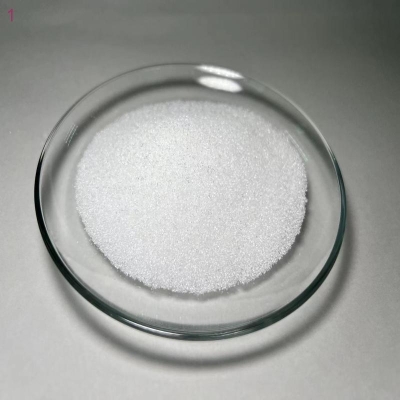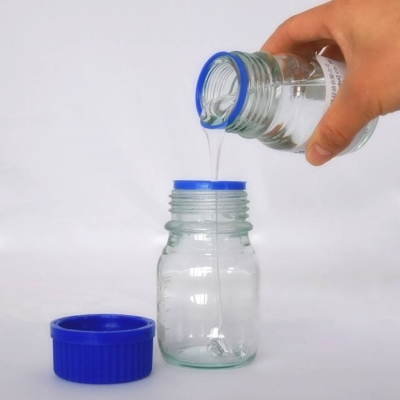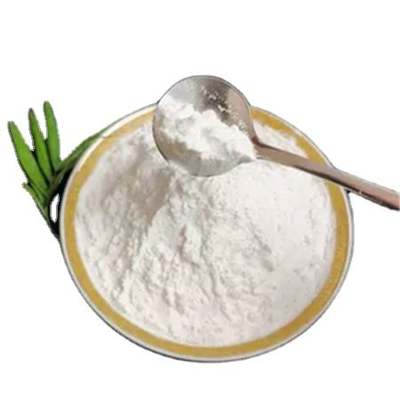-
Categories
-
Pharmaceutical Intermediates
-
Active Pharmaceutical Ingredients
-
Food Additives
- Industrial Coatings
- Agrochemicals
- Dyes and Pigments
- Surfactant
- Flavors and Fragrances
- Chemical Reagents
- Catalyst and Auxiliary
- Natural Products
- Inorganic Chemistry
-
Organic Chemistry
-
Biochemical Engineering
- Analytical Chemistry
- Cosmetic Ingredient
-
Pharmaceutical Intermediates
Promotion
ECHEMI Mall
Wholesale
Weekly Price
Exhibition
News
-
Trade Service
[ Policies and Regulations of Chemical Machinery Equipment Network ] Fujian Provincial Market Supervision Administration plans to issue and implement the "Calibration Specification for Automatic Air Quality Monitoring System", "Calibration Specification for Carbon Dioxide Incubator ", "Calibration Specification for Medical Refrigerated Centrifuge ", "Calibration of Rare Birth Life Measuring Instrument" Five local metrological technical specifications in Fujian Province, including "Specifications" and "Calibration Specifications for Temperature Alternation and Impact Test Equipment", are now open for public comments
.
Chemical Machinery Equipment Network Policies and Regulations Chemical Machinery Equipment Incubator Centrifuge.
"Air Quality Automatic Monitoring System Calibration Specification"
"Air Quality Automatic Monitoring System Calibration Specification"The automatic air quality monitoring system is mainly used for real-time monitoring of gas pollutants (SO2, NO2, O3, CO, etc.
) and particulate pollutants (PM2.
5 and PM10, etc.
) in the ambient air, and the monitoring results are ultimately used as the evaluation of ambient air quality The technical basis for management and management is mainly composed of two parts: the gas pollutant monitoring system and the particulate matter monitoring system
.
) and particulate pollutants (PM2.
5 and PM10, etc.
) in the ambient air, and the monitoring results are ultimately used as the evaluation of ambient air quality The technical basis for management and management is mainly composed of two parts: the gas pollutant monitoring system and the particulate matter monitoring system
.
This specification is a measurement and calibration specification for the monitoring of air pollutants (SO2, NO2, O3, CO, PM10, PM2.
5) by the air quality online monitoring system
.
The compilation of this specification is based on JJF 1071-2010 "Rules for Compilation of National Metrology Calibration Specifications"
.
The main reference standards of this specification are GB 3095-2012 "Ambient Air Quality Standards", HJ 818-2018 "Ambient Air Gaseous Pollutants (SO2, NO2, O3, CO) Continuous Automatic Monitoring System Operation and Quality Control Technical Specifications", HJ 817 -2018 "Ambient Air Particulate Matter (PM10 and PM2.
5) Continuous Automatic Monitoring System Operation and Quality Control Technical Specifications", HJ 654-2013 "Ambient Air Gaseous Pollutants (SO2, NO2, O3, CO) Continuous Automatic Monitoring System Technical Requirements and detection methods", HJ653-2013 "Ambient Air Particulate Matter (PM10, PM2.
5) Continuous Automatic Monitoring System Technical Requirements and Detection Methods",
etc.
5) by the air quality online monitoring system
.
The compilation of this specification is based on JJF 1071-2010 "Rules for Compilation of National Metrology Calibration Specifications"
.
The main reference standards of this specification are GB 3095-2012 "Ambient Air Quality Standards", HJ 818-2018 "Ambient Air Gaseous Pollutants (SO2, NO2, O3, CO) Continuous Automatic Monitoring System Operation and Quality Control Technical Specifications", HJ 817 -2018 "Ambient Air Particulate Matter (PM10 and PM2.
5) Continuous Automatic Monitoring System Operation and Quality Control Technical Specifications", HJ 654-2013 "Ambient Air Gaseous Pollutants (SO2, NO2, O3, CO) Continuous Automatic Monitoring System Technical Requirements and detection methods", HJ653-2013 "Ambient Air Particulate Matter (PM10, PM2.
5) Continuous Automatic Monitoring System Technical Requirements and Detection Methods",
etc.
This specification is published for the first time
.
The main contents of this specification include: scope; reference documents; term definitions; overview; metrological characteristics; calibration conditions; calibration items and calibration methods; expression of calibration results
;
.
The main contents of this specification include: scope; reference documents; term definitions; overview; metrological characteristics; calibration conditions; calibration items and calibration methods; expression of calibration results
;
This specification applies to the calibration of SO2, NO2, O3, CO, PM2.
5 and PM10 parameters in the automatic air quality monitoring system
.
5 and PM10 parameters in the automatic air quality monitoring system
.
"CO2 Incubator Calibration Specification"
"CO2 Incubator Calibration Specification" A carbon dioxide incubator simulates a growth environment similar to that of cells/tissues in vivo in the incubator.
A device for cultivation
.
It is widely used in cell, tissue culture and the culture of some special microorganisms, and is commonly used in the study of cell dynamics, the collection of mammalian cell secretions, the carcinogenic or toxicological effects of various physical and chemical factors, the research and production of antigens, Cultivate hybridoma cells to produce antibodies, in vitro fertilization (IVF), stem cells, tissue engineering, drug screening and other research fields
.
A carbon dioxide incubator usually consists of a temperature and humidity control system, a carbon dioxide control system, an alarm monitoring system, a circulating fan, an air source system and a box structure
.
A device for cultivation
.
It is widely used in cell, tissue culture and the culture of some special microorganisms, and is commonly used in the study of cell dynamics, the collection of mammalian cell secretions, the carcinogenic or toxicological effects of various physical and chemical factors, the research and production of antigens, Cultivate hybridoma cells to produce antibodies, in vitro fertilization (IVF), stem cells, tissue engineering, drug screening and other research fields
.
A carbon dioxide incubator usually consists of a temperature and humidity control system, a carbon dioxide control system, an alarm monitoring system, a circulating fan, an air source system and a box structure
.
This specification is based on JJF 1001-2011 "General Metrology Terms and Definitions", JJF 1059.
1-2012 "Measurement Uncertainty Evaluation and Representation", and JJF 1071-2010 "National Metrology Calibration Specification Writing Rules" as the basic series of specifications
.
This specification is mainly compiled with reference to JJF 1101-2019 "Calibration Specifications for Temperature and Humidity Parameters of Environmental Test Equipment", YY 1621-2018 "Medical Carbon Dioxide Incubator" and JJG 635-2011 "Verification Regulations for Carbon Monoxide and Carbon Dioxide Infrared Gas Analyzers" and other technical data made
.
1-2012 "Measurement Uncertainty Evaluation and Representation", and JJF 1071-2010 "National Metrology Calibration Specification Writing Rules" as the basic series of specifications
.
This specification is mainly compiled with reference to JJF 1101-2019 "Calibration Specifications for Temperature and Humidity Parameters of Environmental Test Equipment", YY 1621-2018 "Medical Carbon Dioxide Incubator" and JJG 635-2011 "Verification Regulations for Carbon Monoxide and Carbon Dioxide Infrared Gas Analyzers" and other technical data made
.
This specification is published for the first time
.
The main contents of this specification include: scope; citations; terms and measurement units; overview; measurement characteristics; calibration conditions; calibration items and methods; expression of calibration results
;
.
The main contents of this specification include: scope; citations; terms and measurement units; overview; measurement characteristics; calibration conditions; calibration items and methods; expression of calibration results
;
This specification applies to carbon dioxide incubators for the cultivation of biological samples such as biological cells, tissues and bacteria
.
.
"Calibration Specifications for Temperature Alternating and Shock Test Equipment"
"Calibration Specifications for Temperature Alternating and Shock Test Equipment" The temperature alternating and shock test equipment is an environmental test box that simulates rapid changes in temperature and environment in a short period of time
.
The test process consists of a cycle of high temperature and constant temperature, cooling, low temperature and constant temperature, heating, and high temperature and constant temperature
.
The high and low temperature rapid alternating test chamber controls the test chamber to switch between the set temperatures at a fixed heating and cooling rate, while the cold and thermal shock test chamber controls the test chamber to rapidly change the temperature between the set temperatures at a specified temperature switching time
.
.
The test process consists of a cycle of high temperature and constant temperature, cooling, low temperature and constant temperature, heating, and high temperature and constant temperature
.
The high and low temperature rapid alternating test chamber controls the test chamber to switch between the set temperatures at a fixed heating and cooling rate, while the cold and thermal shock test chamber controls the test chamber to rapidly change the temperature between the set temperatures at a specified temperature switching time
.
JJF 1001-2011 "General Metrology Terms and Definitions", JJF 1059.
1-2012 "Measurement Uncertainty Evaluation and Representation" and JJF 1071-2010 "National Metrology Calibration Specifications Writing Rules" together constitute the basic series of specifications supporting the formulation of this specification
.
This specification refers to JJF 1101-2019 Calibration Specifications for Temperature and Humidity Parameters of Environmental Test Equipment, GB/T 5170.
1-2016 Test Methods for Environmental Test Equipment for Electrical and Electronic Products Part 1: General Provisions, GB/T 10592-2008 Preparation of Technical Conditions for High and Low Temperature Test Chambers made
.
1-2012 "Measurement Uncertainty Evaluation and Representation" and JJF 1071-2010 "National Metrology Calibration Specifications Writing Rules" together constitute the basic series of specifications supporting the formulation of this specification
.
This specification refers to JJF 1101-2019 Calibration Specifications for Temperature and Humidity Parameters of Environmental Test Equipment, GB/T 5170.
1-2016 Test Methods for Environmental Test Equipment for Electrical and Electronic Products Part 1: General Provisions, GB/T 10592-2008 Preparation of Technical Conditions for High and Low Temperature Test Chambers made
.
This specification is formulated for the first time
.
The main contents of this specification include: scope; referenced documents; terminology; overview; metrological characteristics; calibration conditions; calibration items and calibration methods; expression of calibration results; recalibration time interval and appendix
.
.
The main contents of this specification include: scope; referenced documents; terminology; overview; metrological characteristics; calibration conditions; calibration items and calibration methods; expression of calibration results; recalibration time interval and appendix
.
This calibration specification is applicable to high and low temperature alternating test chambers and thermal shock test chambers with a working range of (-80~200) °C
.
Other environmental test equipment used for temperature change test can refer to this specification
.
.
Other environmental test equipment used for temperature change test can refer to this specification
.
"Calibration Specification for Rare Birth Lifetime Measuring Instrument"
"Calibration Specification for Rare Birth Lifetime Measuring Instrument" The minority carrier lifetime measuring instrument based on the non-contact microwave reflection photoconductive decay test method is a measuring instrument used to test the carrier recombination lifetime of semiconductor materials.
two processes
.
The laser injection generates electron-hole pairs, which leads to an increase in the conductivity of the sample.
When the external light injection is removed, the conductivity decays exponentially with time.
This trend indirectly reflects the decay trend of carriers.
The changing trend can be used to obtain the lifetime of the carrier
.
Using the microwave reflection signal to monitor the change of conductivity is based on the principle that the change of the microwave reflection signal is proportional to the change of the conductivity
.
The test system is mainly composed of pulse light source, photon monitor, microwave sampling system, sample stage, attenuation signal analysis system and computer system
.
two processes
.
The laser injection generates electron-hole pairs, which leads to an increase in the conductivity of the sample.
When the external light injection is removed, the conductivity decays exponentially with time.
This trend indirectly reflects the decay trend of carriers.
The changing trend can be used to obtain the lifetime of the carrier
.
Using the microwave reflection signal to monitor the change of conductivity is based on the principle that the change of the microwave reflection signal is proportional to the change of the conductivity
.
The test system is mainly composed of pulse light source, photon monitor, microwave sampling system, sample stage, attenuation signal analysis system and computer system
.
This specification is compiled in accordance with JJF 1001 "General Metrology Terms and Definitions" and JJF1071 "Rules for Compilation of National Metrology Calibration Specifications", and constitutes the basic requirements in accordance with JJF1059.
1 "Measurement Uncertainty Evaluation and Representation"
.
This specification refers to GB/T26068-2018 "Measurement of carrier recombination lifetime of silicon wafers and silicon ingots by non-contact microwave reflection photoconductive decay method", GB/T 1553-2009 Determination of photoconductive decay of minority carrier lifetime in silicon and germanium Law, GB/T 14264-2009 semiconductor material terminology and other documents
.
1 "Measurement Uncertainty Evaluation and Representation"
.
This specification refers to GB/T26068-2018 "Measurement of carrier recombination lifetime of silicon wafers and silicon ingots by non-contact microwave reflection photoconductive decay method", GB/T 1553-2009 Determination of photoconductive decay of minority carrier lifetime in silicon and germanium Law, GB/T 14264-2009 semiconductor material terminology and other documents
.
This specification is published for the first time
.
The main contents of this specification include: scope; referenced documents; terms and measurement units; overview; measurement characteristics; calibration conditions; calibration items and calibration methods
;
.
The main contents of this specification include: scope; referenced documents; terms and measurement units; overview; measurement characteristics; calibration conditions; calibration items and calibration methods
;
This specification applies to the non-contact microwave photoconductivity decay (μ-PCD) test method and calibration of minority carrier lifetime measuring instruments with a measurement range of 0.
5μs to 40μs
.
It is also suitable for some multi-functional minority carrier lifetime measuring instruments including this method
.
5μs to 40μs
.
It is also suitable for some multi-functional minority carrier lifetime measuring instruments including this method
.
This specification does not apply to DC photoconductivity decay (PCD) method, high frequency photoconductivity decay (hfPCD) method, surface photoelectric voltage (SPV) method, microwave detection photoconductivity ( Calibration of minority carrier lifetime measuring instrument by microwave-detected photo-conductance (MDP) method and quasi-steady-state photo-conductance (QSSPC) method
.
.
"Medical Refrigerated Centrifuge Calibration Specification"
"Medical Refrigerated Centrifuge Calibration Specification" Medical refrigerated centrifuge is a special equipment for rapid separation, concentration and purification of mixed substances with different sedimentation coefficients through centrifugal force generated by high-speed rotation.
It is widely used in medical and health care, blood stations, pharmaceutical factories, biomedical engineering, animal and plant research and other fields
.
The centrifuge usually consists of a rotating device, a speed control system, a temperature control system, a centrifugal chamber, a centrifugal turntable, a safety protection device and a base
.
It is widely used in medical and health care, blood stations, pharmaceutical factories, biomedical engineering, animal and plant research and other fields
.
The centrifuge usually consists of a rotating device, a speed control system, a temperature control system, a centrifugal chamber, a centrifugal turntable, a safety protection device and a base
.
This specification is based on JJF1001-2011 "General Metrology Terms and Definitions", JJF1059.
1-2012 "Measurement Uncertainty Evaluation and Representation", and JJF1071-2010 "National Metrology Calibration Specification Writing Rules" as the basic series of specifications
.
This specification is mainly compiled with reference to YY/T 0657-2008 Medical Centrifuge; GB/T 30099-2013 General Technical Conditions for Laboratory Centrifuges; JJF 1101-2019 Environmental Test Equipment Calibration Specification for Temperature and Humidity Parameters and other technical data
.
1-2012 "Measurement Uncertainty Evaluation and Representation", and JJF1071-2010 "National Metrology Calibration Specification Writing Rules" as the basic series of specifications
.
This specification is mainly compiled with reference to YY/T 0657-2008 Medical Centrifuge; GB/T 30099-2013 General Technical Conditions for Laboratory Centrifuges; JJF 1101-2019 Environmental Test Equipment Calibration Specification for Temperature and Humidity Parameters and other technical data
.
This specification is formulated for the first time
.
The main contents of this specification include: scope; citations; terminology; overview; measurement characteristics; calibration conditions; calibration items and methods; expression of calibration results; recalibration time interval and appendices
.
.
The main contents of this specification include: scope; citations; terminology; overview; measurement characteristics; calibration conditions; calibration items and methods; expression of calibration results; recalibration time interval and appendices
.
This specification applies to medical refrigerated centrifuges, as well as to the calibration of ordinary normal temperature medical centrifuges, but not to ultra-speed medical centrifuges with a rotational speed range exceeding 30,000 r/min
.
.







